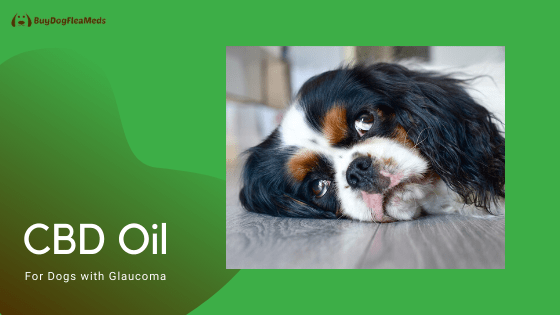Cbd Oil For Dogs With Glaucoma
Pet glaucoma is a serious condition. While age is still the common cause of glaucoma in pets, there are other things that may trigger this painful plight.
So, does your dog have glaucoma?…
What Is Glaucoma in Dogs?
Glaucoma does not only affect dogs, even cats get glaucoma. Glaucoma causes both cats and dogs constant pain and in worse cases, permanent loss of vision on the affected eye.
Pet glaucoma is pretty much like human glaucoma. It’s caused by an increase in the aqueous humor or the clear and watery fluid found inside the eyes of humans, canines, and felines. The aqueous humor should be able to drain normally by itself but because it can’t, it results in the accumulation of the same fluid that causes pressure inside the eye.
Glaucoma causes your pet’s eye to stretch, affecting the optic nerve and basically damaging the overall integrity of the affected eye. As you can imagine, glaucoma causes severe pain, sharp pangs that may occur intermittently or incessantly.
Unfortunately, 40% of dogs diagnosed with glaucoma will end up blind. Majority of cats with glaucoma will show a substantial loss of vision, both partial and total, even before clinical manifestations of the condition are observed.
Different Types of Glaucoma
There are two types of glaucoma that affects both cats and dogs – primary and secondary.
Primary glaucoma is caused by a predisposed trait or an inherited genetic condition. This means that your pet has higher chances of developing primary glaucoma the closer it is to a name that had glaucoma in the pedigree. Sires and dams that have predecessors who had recorder cases of glaucoma will most likely pass it on to the litter.
In dogs, breeds that have a genetic predisposition to the condition range from breeds of different sizes. Larger breeds like Great Danes, Samoyeds, Alaskan Malamutes and Chow Chows are victims of primary glaucoma. Medium-sized breeds like Siberian Huskies and Dalmatians are also known for developing primary glaucoma. In smaller breeds, it’s common for Chihuahuas, Basset Hounds, Cocker Spaniels, Poodles, Beagles, and Jack Russel Terriers to have glaucoma.
In cats, a number of breeds like Burmese Cats and Siamese Cats are breeds known to have predisposed glaucoma.
Secondary glaucoma in both cats and dogs is developed instead of having been inherited. Several conditions can trigger and cause secondary glaucoma to develop. In both dogs and cats, eye injuries are the number one cause of secondary glaucoma.
Once the eye of your pet is injured, it may bleed and swell. Inflammation will eventually damage the tissues in the injured eye and will cause scar tissues to form. In most cases, scar tissues can block the exit point of the aqueous humor and excessive fluid is accumulated.
Other conditions affecting secondary glaucoma in pets include infection of the eye, tumor on or near the eye, advanced eye cataracts, and chronic retinal detachment, a condition caused by a hole or by a tear in the retinal tissue.
Unfortunately, secondary glaucoma can be triggered by something as simple and as preventable as an untrimmed toenail that can scratch your dog or your cat’s eye.
To put it simply, primary glaucoma is passed down to later generations in a pedigree while secondary glaucoma can be acquired or developed as a result of several injuries and medical conditions.
How to Prevent Glaucoma in Dogs
Unfortunately, primary glaucoma is not a preventable condition. Because primary glaucoma is a result of a genetic flaw and of asymmetrical physical development, it cannot be corrected without surgery.
However, dogs that inherited primary glaucoma will most likely not have primary glaucoma in its other eye. Nevertheless, living with one eye blind leaves a dog or even a cat partially handicapped.
On the other hand, secondary glaucoma is preventable.
Here’s how.
Trim their Nails:
Long nails can poke your pet’s eye when they scratch their face. Make sure to take your pet to the groomer or you can just trim it yourself. For dogs, just make sure you take them out regularly for walks, walking on pavement (cool pavement of course) can cause the nails to wear down to a point that they won’t pose danger to your pets.
Create a Safe Space:
There’s nothing better than creating a safe environment for your pets. Clean your backyard or your pet’s play area and remove sharp objects that might cause eye injury. Also, make sure to clean the area to ensure that your pet will not catch anything that might give it an infection later on.
Keep them Healthy:
A healthy pet has higher chances of brushing off infection and diseases than a frail and an unhealthy one.
Visit the Vet Regularly:
Take regular trips to the vet. Your veterinarian will help you identify and treat infections as well as secondary glaucoma early on.
Signs and Symptoms of Glaucoma in Dogs
Your pet can’t tell you it’s suffering from glaucoma; they don’t show they’re hurting like how humans do. Glaucoma symptoms are often subtle and are hard to notice.
One thing you should take note of is that glaucoma, both primary and secondary, gives both cats and dogs a great deal of pain.
Dogs will often press their heads against a wall or rub their eyes in your legs and even on furniture.
Pay attention to your pets when you see them do this.
Symptoms on cats are even harder to spot. Only the most observant of cat owners will notice pets squint or develop clouds that tend to grow progressively over time.
Overall, dogs and cats suffering from pain will find daily activities a little less interesting. You’ll notice subtle changes in the amount of food they eat and the amount of activities they do in a day.
Dog Glaucoma Natural Home Remedies
Unfortunately, there aren’t many home remedies that will help you manage and let alone treat glaucoma. However, there are some herbs that can help you reduce the pressure in your pet’s eyes which will reduce pain and discomfort.
Here are a few.
Ginko:
Though it’s not common to find Ginko in many households, you can use this herb to help alleviate the pain your pet is experiencing because of glaucoma. Ginko is a great for blood circulation and can be used together with the herb Bilberry.
Bilberry:
Bilberry is a natural agent that reduces pressure in the inner eye. It is also rich in vitamins and minerals that help keep the eyes healthy.
CBD:
CBD is an active ingredient found in hemp and is good in eliminating inflammations. CBD oils not only reduce inflammation allowing the aqueous humor to normally drain but it also helps calm cats and dogs and help them manage pain from glaucoma.
How much CBD should I give my dogs with glaucoma?
Different companies use different dosages of CBD. Make sure to check with the manufacturer with how potent the CBD oil is.
For managing pain and inflammation, the basic rule is to administer a minimum of 1 and a maximum of 5 mg of CBD for every 10 pounds of your pet’s body weight. Depending on the severity of the glaucoma, you can use a lower dosage of 1 mg of CBD. For medium dosage 3 mg of CBD is normally the level you’d want to go for and for pets suffering extreme pain, 5 mg of CBD is recommended.
CBD is safe for pets as long as it contains very minimum amounts of THC.
References:
https://www.ncbi.nlm.nih.gov/pmc/articles/PMC4862370/
https://www.marijuanabreak.com/cbd-for-glaucoma
https://www.naturalpetliving.com/how-much-cbd-oil-should-i-give-my-dog/
https://www.naturalpetliving.com/how-much-cbd-oil-should-i-give-my-dog/
view morelawful quagmire for best cbd oil for dogs and cats cancer
CBD? top cbd for cats
tetrahydrocannabin dog Glaucoma natural home remedies
review honestpaws
story about cbd dog treats reviews

